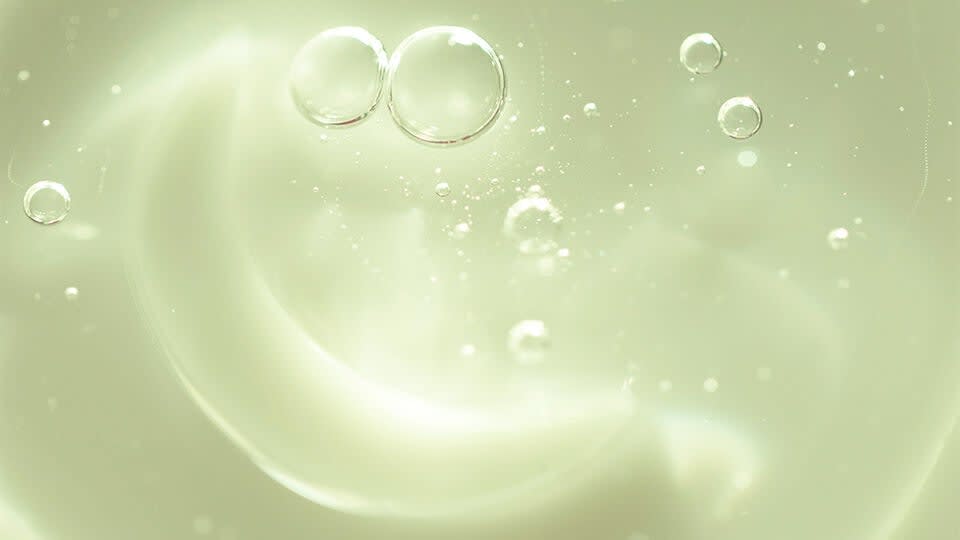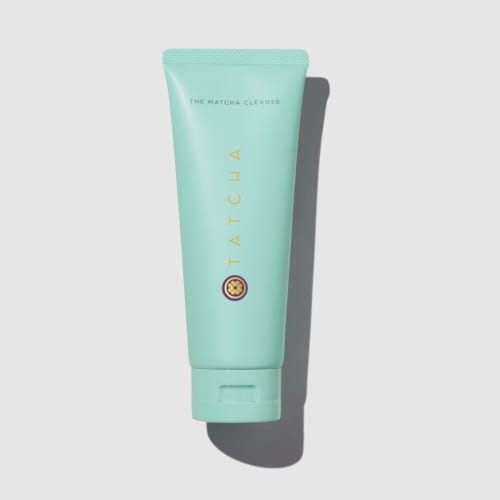There are many factors that can contribute to an oily complexion, from what you eat to where you are. This guide will help you figure out what causes could be contributing to your oily skin.

Oily skin can happen to anyone. In fact, it does: Oil production is a natural biological mechanism that helps lubricate and protect the skin barrier, and it occurs across every unique type of skin. Some faces make a little more oil than others, and if your skin is characterized by frequent slickness and shininess, it’s a sign that you might have oily skin.
Maybe you had oily skin in your teens, as a result of surging hormones; maybe you have oily skin when you’re feeling acutely stressed but not when you’re feeling calm. According to the American Academy of Dermatology Association, these reasons and more (humidity, genetics) can be at the root of oily skin. At its best, our skin looks dewy and hydrated; at its less-than-best, oiliness can be bothersome, and doesn’t always mix well with elements of daily life, like makeup and flash photography.
The keys to unlocking oily skin are everywhere, and many can be found in the skincare section. Certain formulations and ingredients have been shown, when applied topically, to keep skin’s oil levels in check. But the first step in wielding these tools is to learn about the causes behind oily skin, and why you might have oily skin in the first place.
What is oily skin?
The derm term for oil is sebum, a waxy substance made up of lipids like cholesterol, squalane, and glycerides. The Cleveland Clinic tells us that sebum comes from sebaceous glands, microscopic pockets within our hair follicles. Sebum secretes from a pore, or rises up and out of a follicle along a hair. We can see sebum on the surface of our faces—it’s colorless but catches light.
There are sebaceous glands all over the body, but most of them are on the face and scalp. (Humans don’t have sebaceous glands on only four skin surfaces—the bottoms of the feet and palms of the hands.) Their main function is as a protective sealant against friction and moisture loss. Sebum also contributes to body odor.
Some people are born with larger pores, containing larger sebaceous glands, and have oily skin as a result. But there are plenty of other reasons why your skin might be oily. Understanding the causes of your oily skin can point you toward a solution.
What causes oily skin?
A better question might be: What doesn’t cause oily skin?
The reasons one might have oily skin are as variable as the reasons one might become a famous athlete, or like the taste of pickles. Some contexts for oily skin depend on genetics, while others are purely circumstantial. But if you have oily skin, it’s possible that one or a few of these causes will jump out as particularly true to you.
Oily skin caused by genetics
If you have oily skin and are looking for the cause of it, a good first place to look is at your family tree. The size of one’s sebaceous glands is ultimately a hereditary trait, as one dermatologist explained to Women’s Health, meaning oily skin can be passed down like an heirloom.
Asking your parents or relatives if they deal with oily skin—or find their skin to be slick more often than not—can help you decide if genetics might play a role in your skin type. If not, you may be looking at your lifestyle or current phase of life for context clues.
Oily skin caused by hormones
Hormones, those messenger molecules that travel throughout the body, have an impact on many of our organ systems, and skin is no exception. Estrogen, for example, is known to stimulate collagen and elastin production in the skin—these structural proteins give skin its plumpness and bounce. Progesterone and testosterone, by contrast, affect oil; both activate the sebaceous glands and signal the skin to produce oil.
If your skin is only over-oily at certain times, pay attention to the possibility of increased hormonal activity. Are you close to your period? Do you take any medications that may affect your hormones? These questions can help you figure out if your oily skin is related to hormones.
Oily skin caused by stress
Maybe your skin is temporarily oily, but you are sure it’s not related to hormones. Is it possible you’re under stress?
If it is, well, it still may be related to a hormone of a different kind: Cortisol. This fight-or-flight hormone is released in times of acute stress to help us manage whatever situation we find ourselves in. But when it’s constantly deployed due to ongoing stress, it creates “chronic stress,” and puts the body in a vulnerable state.
A 2020 New York Times story called “This is Your Skin On Stress” elucidated the connection. Cortisol depletes our skin’s water levels, which could lead to dryness, but it also sends sebum production into overdrive. “So for many of us, our skin seems more oily when we’re under stress, and it’s more acne prone,” as one dermatologist put it. If you’re suffering from stress, your skin may be one more reason to slow things down.
Oily skin caused by diet
It seems like a schoolyard myth, that eating greasy foods like pizza could lead to an overabundance of grease on one’s face. But according to science, there may be truth to the rumor. A report published in Dermatoendocrinology noted evidence that low-glycemic foods like fruits, veggies and lean proteins could contribute to oiliness. A more recent study from Korea also supported that thesis, and found that meats, dairy, and alcohol consumption correlated to higher sebum content.
Oily skin caused by climate
Skin is kind of like the weather: It’s found all over the world in many different varieties, and its unique characteristics sometimes depend on specific locations. The skincare needs of somebody living in the deserts of the western United States will differ from those of somebody living in the rainforests of eastern India.
This has to do with humidity, the water content of the air, interacting with skin. According to dermatologists, high humidity can cause sebaceous glands to produce more oil, which is why you may be more prone to oily skin in wet climates or during rainy seasons. Some skincare guides are tailored to eliminating oily skin specifically during India’s monsoons. Keep your local weather report in mind when you’re thinking of your skin — and when you’re traveling, pack products accordingly.
Oily skin caused by skincare
Certain skincare can be hugely beneficial for oily faces, but product misuse can actually contribute to an even oilier complexion if you’re not careful. To understand why this happens, we need to go back to the root of oily skin (sebum) and what it does (protect the skin barrier).
One of the most important layers of the skin system is this outermost barrier, composed of dead skin cells, lipids, proteins, and fats. Sound familiar? They should, because sebum is also composed of lipids and fats. You can think of sebum as a kind of caulk that helps reinforce the skin barrier. Taking away too much necessary sebum can affect the integrity of the skin barrier.
Skincare products are effective at rebalancing the water and oil levels in our skin, but using too many of them can throw that balance out of whack. It’s a good idea to run your routine by an expert like a licensed aesthetician or board-certified dermatologist for feedback on what your skin specifically needs. When you’re ready, we’ve got suggestions.
What skincare products help oily skin?
Taking care of oily skin isn’t about using a magic product, but about understanding the mechanisms by which skin gets oily. Once you know the cause of your oily skin, it’s not difficult to chart a path forward toward a more balanced complexion. A few product swaps might also help you get there.
A deeper clean. It can be tempting to want to powerwash one’s own face, especially if it’s oily, but you’ll want to be careful about choosing efficacious ingredients that won’t irritate the skin (or send oil production into overdrive). The Matcha Cleanse was developed for oily faces in mind; this gel cleanser lathers into a lightweight foam that reaches deep into pores, lifts away dirt, and leaves skin feeling tighter and smoother. BHA alternatives from Japanese botanicals help to loosen the bonds between dead skin cells and balance oil levels, refining with every rinse.
A weekly treatment. You could probably use a little break. Why not turn it into a weekly skin ritual? Some skincare products that benefit oily skin contain powerful ingredients that allow for more infrequent application, providing excellent (and easy) options for boosting your daily skincare routine. Masks are famous for this use-case, usually requiring a few minutes of application once or twice a week. Look for one that is based in clay, like The Clarifying Clay Mask. It’s a time-tested ingredient known to balance oil. Or, if you’re looking for something more exfoliating, you could try The Rice Polish: Deep, a powder made of finely-milled rice bran. It’s gentle enough to use on every skin type, but oily faces in particular will love the addition of Japanese wild rose, with its pore-tightening powers.
A daily paper. It’s the product that helped inspire Tatcha’s philosophy of bringing Japanese botanicals into the contemporary beauty conversation: Abaca leaf blotting papers, or aburatorigami. The soft leaflets absorb excess oil without disturbing makeup for petal fresh skin anytime, anywhere—and a dusting of gold flakes adds a little glow. When skin is on the oilier side, a single sheet can help you mattify without needing to reach for powder or a tissue. And, because oily skin happens to everyone, they’re nice to give to a friend in need, too.





